Pop Culture
How the Chocolate-Coated World of ‘Wonka’ Was Brought to the Screen
The production team divulges how the delectable sets came to be.
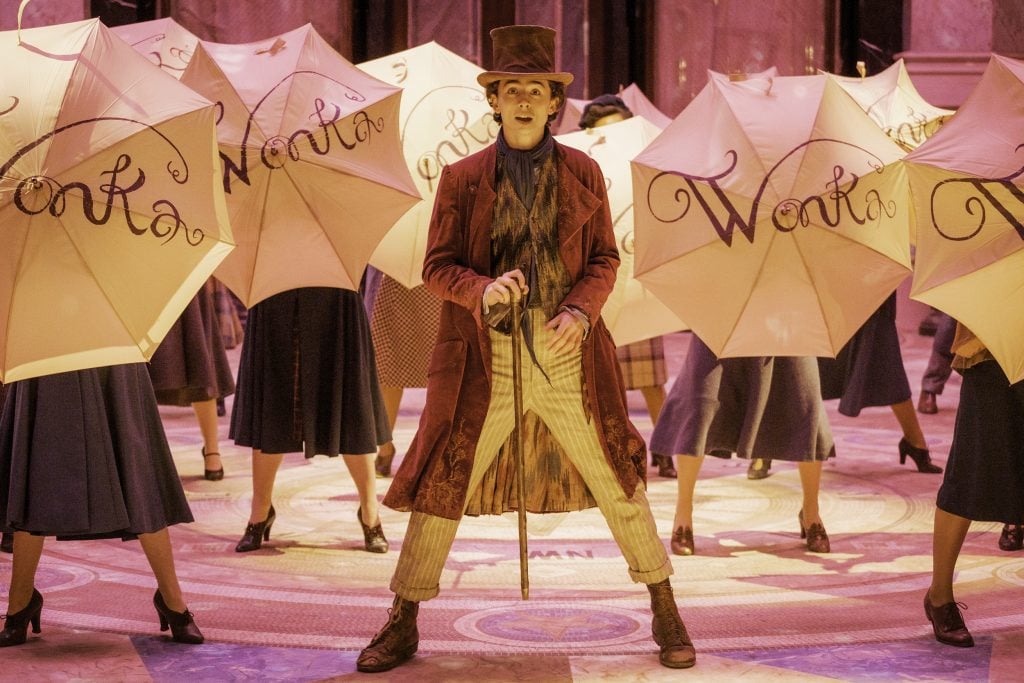
Wonka, which begins streaming March 8, is awash with equally whimsical and delectable visuals—fitting for a movie tracing the journey of future chocolate factory-owner, the titular Willy Wonka, played by Timothée Chalamet.
Directed by Paul King, of Paddington fame, the fantasy film’s sets were brought to life by production designer Nathan Crowley and set decorator Lee Sandales. A mix of manmade sets and real-life filming locations can be seen throughout the movie, which received a nomination for an ADG Excellence in Production Design Award.
“The objective was to seamlessly integrate built environments and real-world settings, employing principles of spatial continuity and material harmony to immerse viewers in the fantastical world of Willy Wonka,” explained Sandales when asked how filming locations were chosen. “Meticulous attention was paid to lighting, scale, and architectural vocabulary, subtly reinforcing the story’s themes and enhancing narrative believability.”
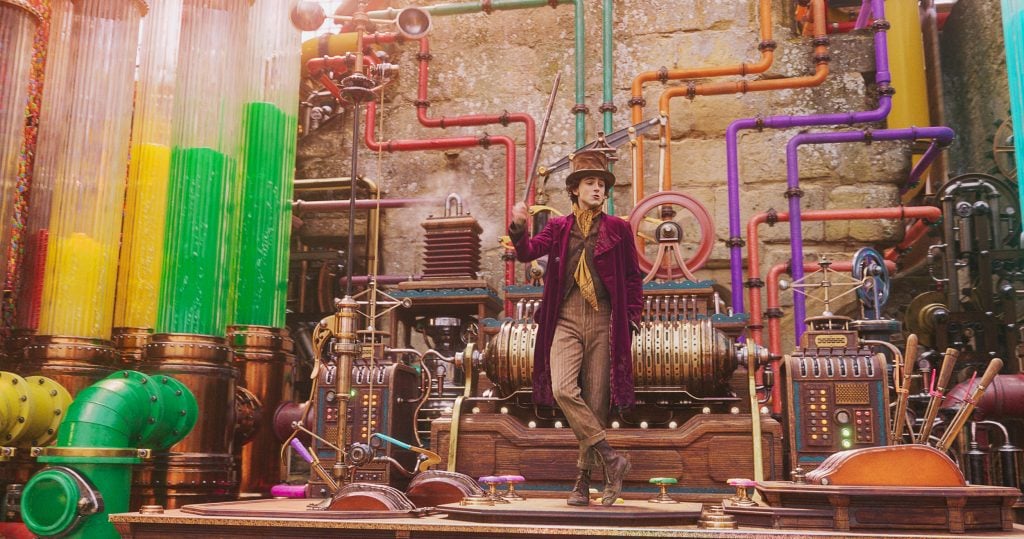
Timothée Chalamet in Wonka (2023). Photo courtesy of Warner Bros.
Making sure the sets and the locations complemented each other was key, as there needed to be cohesion so that everything blended together. This required a collaborative approach between the set designers and location scouts.
“By crafting journeys for characters within the script, we can facilitate transitions between physical spaces,” said Sandales. “Furthermore, incorporating architectural elements, material colors and textures, and lighting cues from chosen locations into the set fosters a cohesive visual language. This ensures a sense of continuity for the audience, immersing them deeper into the film’s world.”
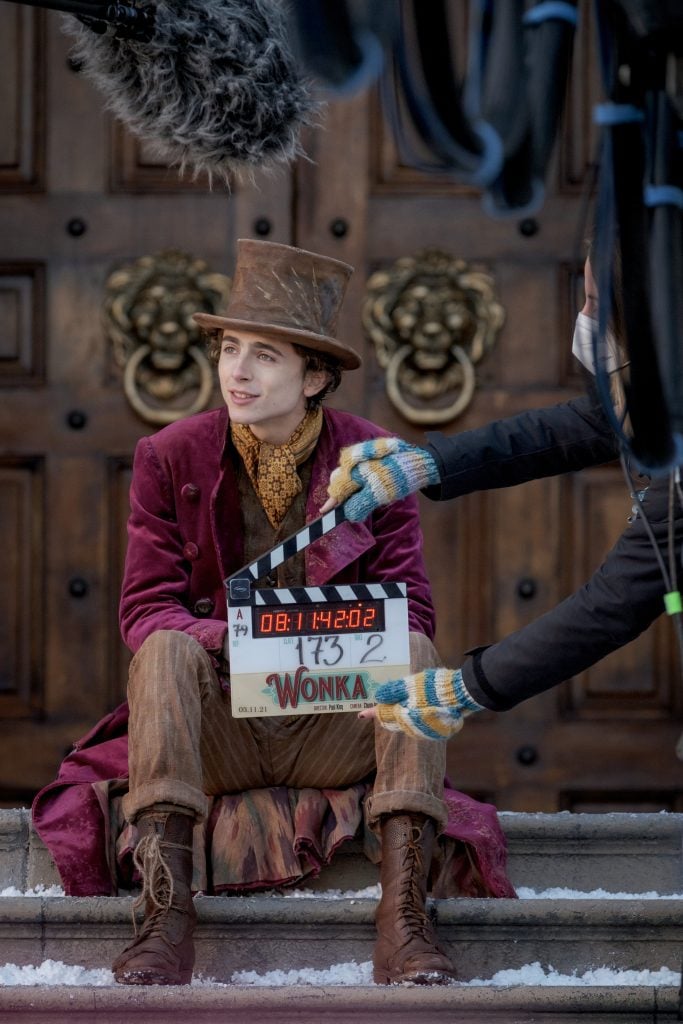
Timothée Chalamet on the set of Wonka (2023). Photo courtesy of Warner Bros.
Filming locations for Wonka included various venues around England, from the historic Eltham Palace in southeast London to Verulamium Park in St. Albans, Hertfordshire.
The production also made the best of “the charming streets and hidden corners of Oxford, along with the picturesque walkways along Bath’s river,” said Sandales, deploying such locations as the Bath Abbey and the Sheldonian Theatre in Oxford. “These locations added a rich layer of authenticity and texture to our film, perfectly complementing our grand sets,” he explained.
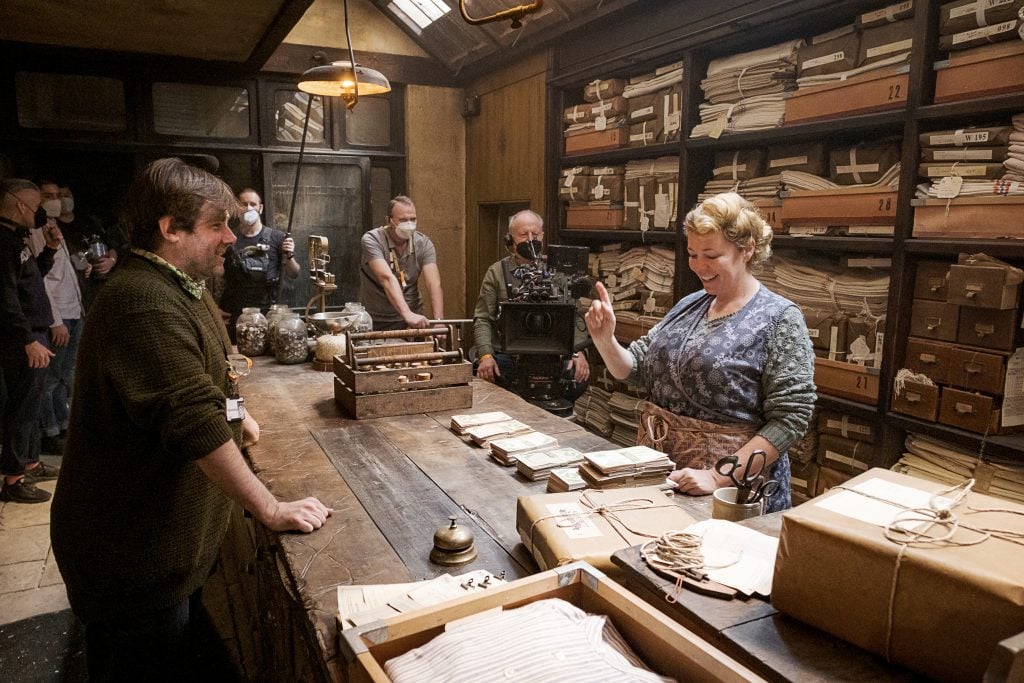
Olivia Colman on the set of Wonka (2023). Photo courtesy of Warner Bros.
At the center of Wonka is the chocolate shop. In Crowley’s words, it serves as “a visual connection to [the character’s] childhood and the love of his mother. It is a retelling of his childhood home, the landscape he remembers as a boy, in which he is reaching out to the world for them to experience [the] magic of his chocolate creations.” This can best be seen through the edible luscious landscape in Wonka’s shop—which boasts its own river, trees, flowers, wildlife, beehives, cherries, mountains—made to look like they were crafted out of chocolate, sugar, and candy.
Because real chocolate couldn’t be used, Crowley and his team researched and developed new paint techniques and finishes to achieve the look of rich cocoa. That involved innovative practices such as crafting a faux chocolate cow out of fiberglass. Over the course of four months, the film’s prop manufacturing department created numerous pieces, following discussions with director King to determine what kinds of elements were needed.
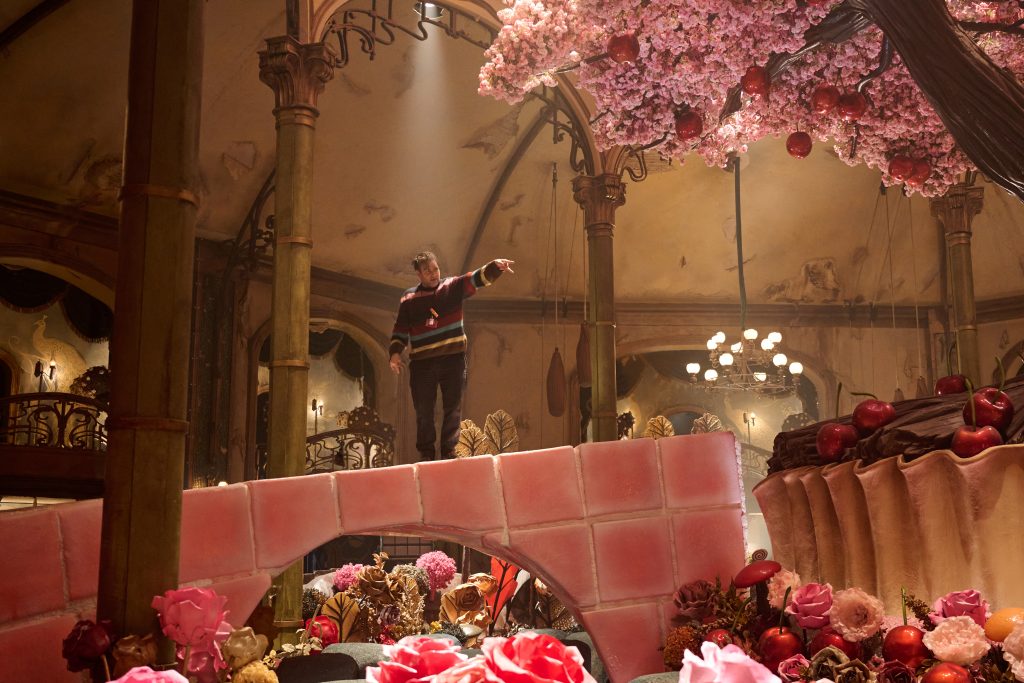
On the set of Wonka (2023). Photo courtesy of Warner Bros.
In the second half of the film, viewers are transported underground, beneath a grandiose church, to an Art Deco-esque space. Glazed lapis lazuli tiles and perfectly symmetrical arches encircle a room dotted with rattan-and-leather chairs and anchored by a chocolate tank. When designing this space, Sandales said he sought to “avoid a sterile, metallic structure that would clash with the whimsical essence of Wonka’s world. Instead, we opted for a tiled tank reminiscent of a Victorian subway tunnel, drawing inspiration from the decorative bathhouses of Budapest.”
The cool blue and green tiles, Sandales added, “serve to make the setting ominous and secret. The circular architectural layering outside the tank transitions into the chocolatiers’ subterranean haven. This sumptuous hideout, built into the catacombs below the church protected by a vault door, is virtually impenetrable.”





